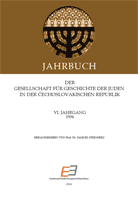

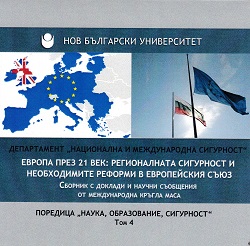
Keywords: Serious crime; Operational and investigative activities; Toolbox of operational-search activities; The agents method;
The report identifies the main problems of police operational and investigative authorities to combat serious crime. Emphasis is placed on inadequate professional qualifications of these authorities, especially concerning full and comprehensive use of the elements of operational and investigative tools. The guidelines for its quality and lasting improvement is marked as a prerequisite for successful prevention, detection and documentation of serious crimes committed in conspiracy. We make a concomitant interpretation of the essential characteristics of serious crime; the nature and character of operational-search activity; specifics of its tools; key importance of the so-called. "Agents method" for aggressively countering serious crime.
More...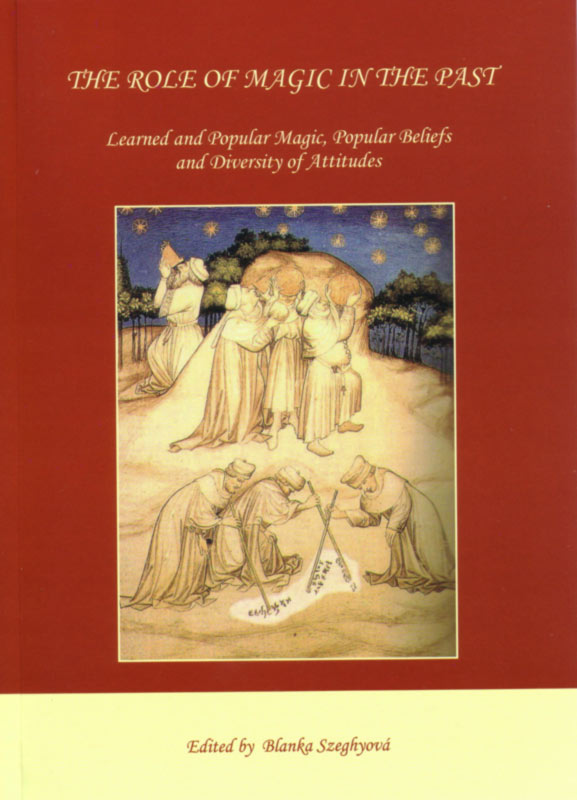
Keywords: magic; alchemy; Slovakia; history; renaissance; natural sciences;
The theme of the history of alchemy is usually neglected by historians in Slovakia or regarded in the context of the history of science and technology as marginal. However, irrespective of this point of view, it is possible to record the existence of alchemy, regarded in the literature of the time sometimes as an art (ars) and sometimes as a science (scientia), and its turbulent flourishing in the Renaissance period and later, whether in European or Slovak history. It had an important influence on contemporary society, including science, culture and politics and analysis of this area would require more detailed research. There are various works devoted to aspects of this problem in Slovakia, dealing with alchemy in the context of the history of the natural sciences in Slovakia, but a general work summarizing the partial findings has not been published so far, in contrast to Czech and Polish historiography.
More...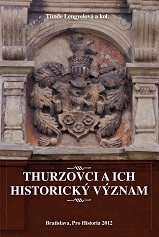
Keywords: Thurz family; Thurzers; Thurzian bishops; reformation; aristocracy; 16th century;
Pri vzostupe thurzovského rodu patria prvé desaťročia 16. storočia ku kľúčovému obdobiu. Z generácie príslušníkov rodu tohto obdobia pochádzajú hneď traja humanistickí biskupi: Ján Thurzo, vratislavský (Wrocław), Stanislav Thurzo, olomoucký a Žigmund Thurzo, veľkovaradínsky (Oradea) biskup. Toto obdobie rodu tvorí významné ohnivko v reťazci medzi meštiansko-podnikateľským životným štýlom, charakteristickým pre 15. storočie a veľkostatkársko-aristokratickým spôsobom života, ktorý začal súčasne s kariérou Alexeja Thurzu. Je zrejmé, že thurzovskí chlapci nedostali svoje prelátske stolce len vďaka svojim osobným kvalitám, ale predovšetkým hospodárskym úspechom svojich rodičov a ich politickému vplyvu, predsa však zostáva faktom, že vo svojich vysokých pozíciách obstáli veľmi dobre, najmä Stanislav, ktorý sa dožil vysokého veku a svoje biskupstvo riadil zvlášť dlhú dobu. Títo traja biskupi mohli byť ozdobou svojho rodu už len svojím životom, veď boli základnými piliermi nielen uhorsko-českej monarchie Jagelovcov, ale ako preláti olomouckej a vratislavskej cirkevnej provincie – z dôvodu spochybnenia verejnoprávneho statusu Českej Koruny – boli pokladaní za kniežatá aj v Nemecko-rímskej ríši a za pánov svojich provincií, aj keď nedostali priame hlasovacie práva na ríšskych snemoch. Je zrejmé, že ich činnosť stabilizovala pozície rodu a zvyšovala jeho prestíž, a samozrejme, nezištne urovnávala osobné kariéry ich bratov či synovcov.
More...
Keywords: Kingdom of Hungary; Thurz family; funerals; tombstones; aristocracy; tradition; middle ages; modern age;
Najstaršie a aj najznámejšie pohrebné miesta podľa súčasníkov najvznešenejšieho uhorského rodu Thurzovcov sú vo farskom Kostole sv. Jakuba v Levoči. Okolnosť, okrem iného, podporuje názor o dlho hľadanom pôvode v spišských Betlanovciach. Nejeden hrob príslušníka rodu Thurzo označuje aj náhrobná pamiatka.
More...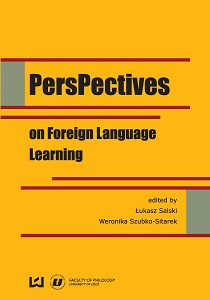
Keywords: phonological processing deficit;developmental dyslexia;culprit
More...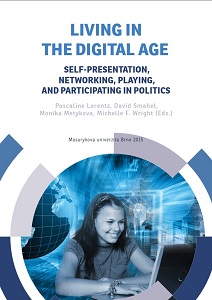
Keywords: online gambling; pathological gambling; gender; risk-taking; dissociation;
Compared to offline gambling forms, online gambling has been hypothesized to lead to a height ened risk of developing gambling pathology. Suggestions about who the risks apply to have varied. In light of the finding that online gambling and the associated financial difficulties are reported mostly by younger males, some hypotheses identify younger males as an at-risk group. An alternative possibility is that younger males simply display a trend that will emerge population-wide as online gambling proliferates. In this chapter, hypotheses about the population-wide and young-male-specific risks of online gambling are assessed using data from three nation wide Czech surveys.
More...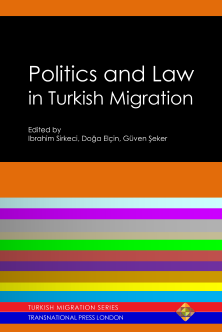
Keywords: references; Germany; Turkey; migrations; immigration; politics; political background; political representation; identity; law on immigration; foreigners; media; social media;
More...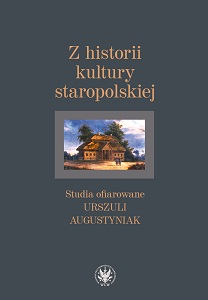
Keywords: Urszula Augustyniak; early modern history; early modern culture; history of religion; nobility; Radziwiłł family; reformation
Anniversary publication for Professor Urszula Augustyniak, affiliated with the Institute of History of the University of Warsaw, a renowned cultural historian specialized in the early modern period. Articles collected in the book are concerned with the broadly understood early modern history of culture, politics, and religion.
More...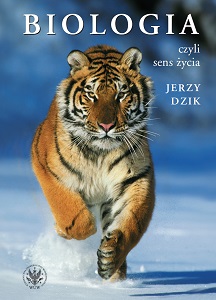
Keywords: biological life; cell; organism; ecosystem; sex; symbiosis; altruism; antropogenesis; evolution
A concise introduction to the latest knowledge of the world of living beings, highlighting the links between biology and physics, chemistry, geology and broadly defined humanities. The author, responding to the fundamental questions of today’s science, describes the phenomenon of life at all subsequent organizational levels: from the earliest forms of biological life, through the structure and functioning of cells, development, anatomy and the functioning of multicellular organisms, to unique relationships between organisms, like symbiosis and altruism, and the position of man in nature. The richly illustrated book, written in a clear language, free of scientific jargon.
More...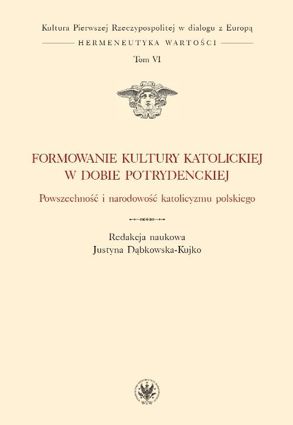
Keywords: Sarmatian piety; counter-reformation in Poland; post-Tridentine religiosity
Volume VI of the series shows not only the peculiarity of the religious culture of the First Republic, the character and specificity of the "Sarmatian" piety, but also reveals the main paths of development of this culture in connection with the thought developed in parallel by Catholic thinkers and writers in Western Europe. The research focused on the issues of opening up Polish post-Tridentine culture to the dynamics of the development of religious thought in other European countries, the ability to conduct dialogue with a foreign culture, and the possibility of adaptation, assimilation and transformation of foreign theories or ideas for the needs of indigenously Polish culture. The authors of individual dissertations try to answer the questions, on the one hand, about the scope and degree of involvement of Poles in the process of renewal of Catholicism in Europe, about their participation in European discussion forums, about the knowledge of Sarmatian writings and the impact of these writings in countries where it was particularly clearly shaped the model of the post-Tridentine renewal of the Church and Catholic religious culture, on the other hand - about the ways of fresh counter-reformation ideas entering the Republic of Poland, the absorption, demand and methods of introducing conciliar decisions into the practice of religious life and the writings of the post-Tridentine times. The 12-volume series of the monograph "Kultura Pierwszej Rzeczypospolitej w dialogu z Europą. Hermeneutyka wartości" presents the cultural heritage of the 15th and 18th centuries as an integral but original part of European culture. The research goal is to identify the ways and forms of the mutual transmission of aesthetic, political and religious values and to present in a broad, multilateral comparative context the axiological structure of the Polish culture of old times. Cultural texts are examined from an internal perspective as records of acts aimed at understanding values, and from an external perspective as statements that join European literary-aesthetic, political and religious discussions. In an intense dialogue, the culture of the Republic of Poland shows not only a receptivity to new ideas, but also creativity and dynamics of action in Europe.
More...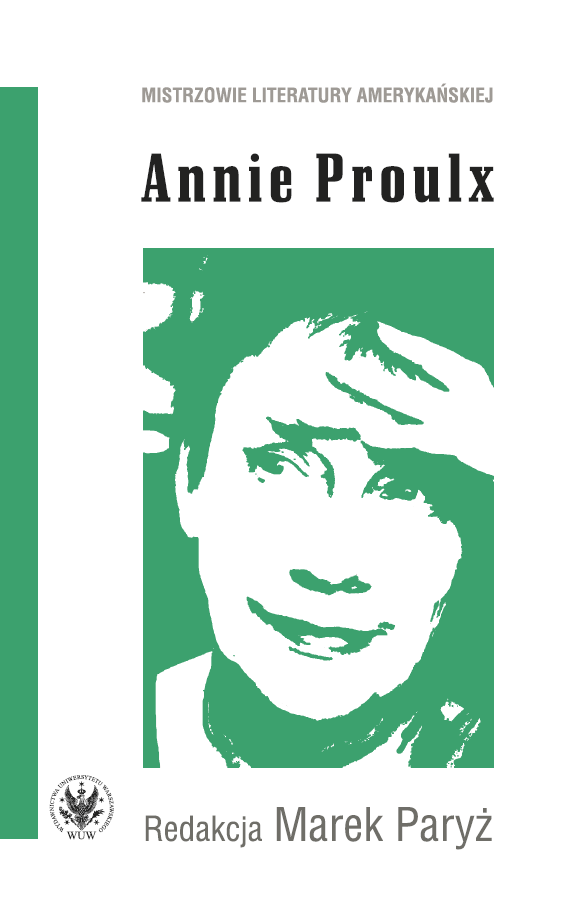
Keywords: Annie Proulx; regionalism; naturalism; nature writing; cultural geography; U.S. West;literary topos and locus;
The philosophical underpinnings and existential implications of Annie Proulx’s fiction situate it in the tradition of literary naturalism. The writer portrays characters from the lower social classes, people who are unable to overcome the impasse in which they have found themselves. Far from idyllic sentiments, Proulx’s approach to the experience of place connects her to the writers associated with so-called new regionalism. She shows the degrading influence of the life amidst beautiful natural surroundings on individual human psyche. Proulx looks closely at the processes of the commodification of regional culture and interprets them as symptoms of a dangerous global tendency.
More...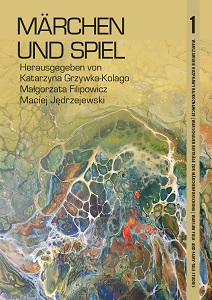
Keywords: Martin Mosebach; German literature; fairy-tale drama
Martin Mosebach’s drama "Rotkäppchen und der Wolf" (2006) harks back to Ludwig Tieck’s fairy tale. For Mosebach, the destruction of the depicted world, characteristic of this Romantic genre and often interpreted as a harbinger of the postmodern game, is not a means of unmasking conventionalised patterns. The writer uses them to create a multilayered structure, analogous to Baroque antithesis, which indicates complicated connections and hidden meanings.
More...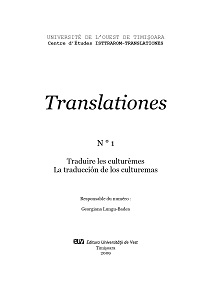
Keywords: cultureme;culturemes;connotation;allusion;translation unit;neologism;monoculturality;
The purpose of this article is to give further details about the concept of cultureme (the culture-bound term or phrase), its definition and semantic field. The significance of this term in the theory of the cultureme and in the theory of linguistic transfer, in the sociology of culture and in sociolinguistics offers the opportunity to set the semantic limits of cultureme and to identify its significance in translation studies. The binary opposition cultureme-translation unit, cultureme-connotation, cultureme-neologism etc. is thought to be a powerful tool to elucidate the fundamental characteristic of the cultureme: monoculturality and its relative autonomy of translation. A classification of the culturemes is suggested to facilitate the translation process and to choose the most appropriate method of translation.
More...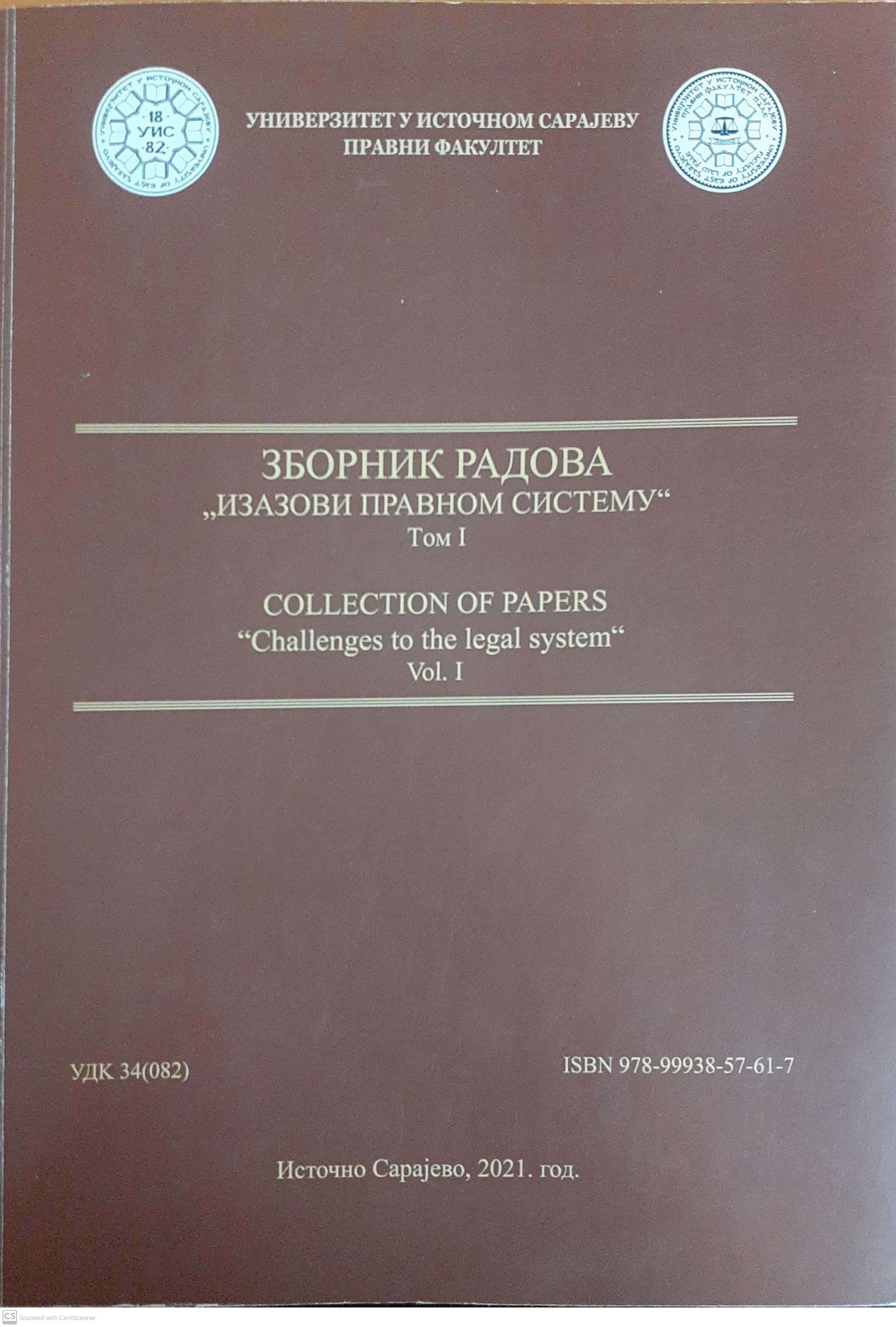
Keywords: Crime prevention;Security science;Risk factors;Protective factors;
In their paper, the authors first emphasized that the emergence and development of crime prevention are some of the important features of criminal justice systems in modern countries of the World and they often reflect the global “transfer” of prevention practice and idea in the way they are embedded in different jurisdictions and within the jurisdiction of a particular state. This way is always clearly shaped by different local and cultural traditions, as well as socio-legalistic context of issues it regulates. The acceptance of preventive strategies and technologies, in the broadest sense, is conditioned by their comparison with political aspirations, on one hand, as well as their harmony with values of culture, on the other hand. Then, it is important to consider the understanding of crime, order and security, having these three concepts being the key to the development of crime prevention and security in social community.
More...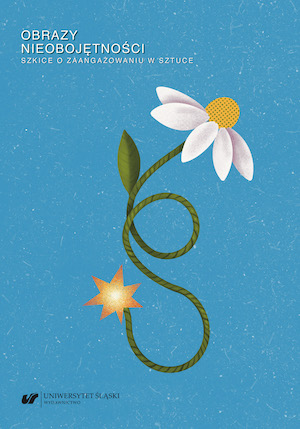
Keywords: Alfred Döblin; German literature; biography
Alfred Döblin is not a completely unknown writer in Poland, nor is he a completely forgotten author, but his name is often cited in passing, in parentheses, only as an exemplification of his style or literary technique, or in order to compare or contrast another author. This article is therefore an attempt to rediscover the author of the novel Berlin Alexanderplatz and to briefly characterize his oeuvre. The reconstruction of his biography was based on Polish and German texts, including Roland Links’ biography Alfred Doblin and articles: Dorota Sośnicka’s “Alfred Döblin: Sketch to a Portrait of the Writer,” Ingeborg Höverkamp’s “Alfred Döblin” and Jan Koprowski’s “One Difficult Life.”
More...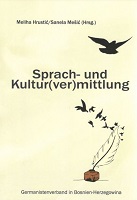
Keywords: foreign language teaching; German; DaF textbooks; language and culture mediation;
This article defines the concept of mediation and its relevance for foreign language teaching. In that context, the role of the mother tongue (first language) and translation will also be interpreted within the historic context. Relevant arguments for and against the implementation of mediation in the teaching process will also be discussed. This will be followed by descriptions of central manifestations of mediation and various mediation activities and strategies, particularly those from the new CEFR Companion volume. Finally, by using examples from the contemporary German Language Textbooks, we will illustrate the current realisation of mediation within these resources. The paper finishes off by offering several methodical-didactic suggestions.
More...
Keywords: foreign language learning; DaF/DaZ lessons; A2 level; didactic potential;
Authentic texts have long been used in GFL lessons at higher language levels. However, they are also suitable for lower language levels, as is shown in this article and the attached worksheet. So that we can achieve this there are several principles to be followed that arise from the specific paradoxical situation in which intentional texts are used for a purpose other than that for which they were intended. In this article, the specifics and principles of working with public texts are pointed out and a suitable methodological process is designed for the stated purpose.
More...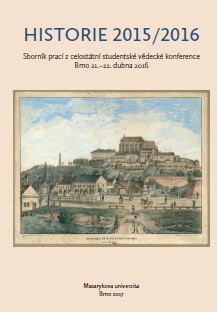
Keywords: Franz Anton von Dietrichstein; Wilhelm von Leslie; travel instructions and travel itinerary;
Der Artikel stellt die Reisenstruktionen und den Reiseitinerar für Franz Anton von Dietrichstein, Wilhelm von Leslie und ihren Hofmeister Joseph Seim nach Rom vor, wo sie in den Jahren 1662–1666 das Theologiestudium auf dem Collegium Romanum absolvierten und zuletzt in den Jesuitenorden eintraten. Über dieser Studienreise berichtet uns die zahlreiche Korrespondenz des Hofmeisters an den Fürst Ferdinand von Dietrichstein, der als Stiefbruder und Vormund Franz Antons auch der Hauptorganisator dieser Reise war. Trotz ihrer geistlichen Orientierung ähnelte sich diese Reise in vielen Richtungen den damaligen Kavalierstouren – unter anderen geht es auch um die Form und den Inhalt der Reiseinstruktionen und des Reiseitinerars. Ferdinand von Dietrichstein war auch der Autor beider Instruktionen. Ihre Struktur und auch ihrer Inhalt erweisen nach der Komparation mit den bisherigen historiographischen Erkentnissen eine beträchtliche Ähnlichkeit mit den Reiseinstruktionen für die Kavalierstouren. Die einzelnen Punkte der Instruktion werden im vorgelegten Artikel auch im Bezug auf den tatsächlichen Vorgang der Reise präsentiert, wie er in der Korrespondenz kennen zu lernen ist. Ähnlich wird auch der Reiseitinerar behandelt, der auch viele beliebten Destinationen der Kavalierstouren beinhaltet. Dieser Itinerar wurde jedoch aus praktischen Gründen nicht konsequent realisiert, wie der Artikel wieder mithilfe der Belege aus der Korrespondenz zeigt.
More...
Keywords: Rokytnice in the Eagle Mountains; analysis of death records; Rokytnice citizens;
This interdisciplinary study focuses on death causes of citizens of the town of Rokytnice in the Eagle Mountains. It covers the period from the 20 th February 1784, when the Emperor Joseph II ordered local parsons to keep records regarding citizen ´ deaths. In order to put this research into a more detailed context, the study openswith an analysis of the situation of Rokytnice rectory and the level of healthcare in the second half of the 18th century. The key building stone of the study is an analysis of death records in Rokytnice between 1784–1812. Interestingly, the research shows that the record keeping was interrupted in several places due to missing pre-printed death register formulaires. The situation stabilized sometime between May and June 1784. Apparently, the parsons themselves began to manually prepare the formulaires which turned out to be the simplest solution. These manually completed formulaires existed in Rokytnice until 1812, indicating that the government probably had to resign on these pre-printed formulaires at the beginning of their existence. The next chapter, focusing on death causes of Rokytnice citizens with German origin between 1784–1793, reveals interesting observations. The study proves the quality of death diagnosis was rather low and unstable. Interestingly, parsons recorded symptoms rather than diagnosis in multiple cases. Clearly, this represents an obstacle for this research as it is almost impossible to consistently track the death causes due to missing or incomplete statistics..
More...